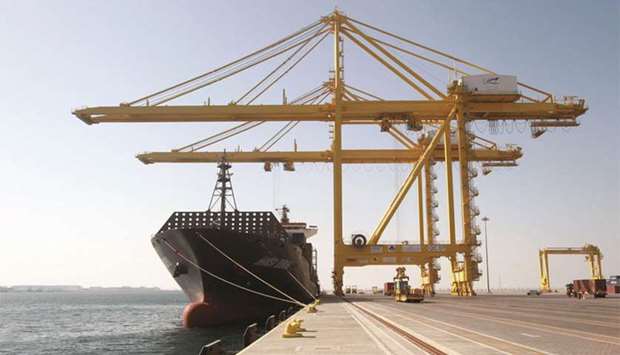Hamad Port, which has seen the world’s largest shipping companies seek entry and growth in the Qatari and regional markets, berthed 171 vessels in November last year compared to 178 the previous month, according to official figures.
The container traffic (net tonnage) stood at 173,200 tonnes in November against 183,900 in October, according to figures released by the Ministry of Development Planning and Statistics.
Hamad Port’s strategic geographical location offers opportunities to create cargo movement towards the upper Gulf, supporting countries such as Kuwait and Iraq, and south towards Oman, QTerminals chief executive Neville Bissett had earlier said.
The country's total exports (valued free-on-board) had seen a 3.8% increase on a monthly basis in November, while imports (valued at cost insurance and freight) had fallen 30%.
Al Ruwais Port saw 276 vessels berth in November compared to 278 the previous month. The port saw more than doubling of the container traffic to 80,000 tonnes. It had seen 156 vessels berth in November 2016 and cargo movement was 35,000 tonnes.
Mesaieed Port berthed 156 vessels in November, which showed a 4% growth month-on-month and the net tonnage showed more than 13% expansion to 223,000 tonnes.
Haloul Port saw as many as eight vessels berth in November this year same as that in the previous month. The net tonnage through the port however saw more than 5% decline to 714,000 tonnes.
Doha Port berthed eight vessels this November, showing more than 14% growth month-on-month. The container traffic almost tripled to 105,000 tonnes in the review period. The port witnessed 46 vessels berth in November 2016 and cargo movement of 593,000 tonnes.
Ever since Qatar came under siege in June 2017, Doha fastidiously renewed its maritime strategy by opening more links with Asian and other countries including Oman, Turkey and Iran in order to ensure uninterrupted supply chain.
Highlighting that many main line operators have evinced interest in starting direct services to Hamad Port, while others have already started or are expanding their existing routes, Bissett had said the new routes include additional services from China, the Far East and Bangladesh as well as enhancement of services from established routes including India, Pakistan, Oman, and the Mediterranean.
In November this year, MDPS data said the top five origin of imports were China, the US, India, Germany and Japan from where imports were valued at QR1.23bn, QR1.22bn, QR0.53bn, QR0.48bn and QR0.47bn respectively.
In the case of exports, the top five markets were South Korea, Japan, India, China and Singapore, which had seen exports to the tune of QR4.16bn, QR3.51bn, QR2.69bn, QR2.39bn and QR1.84bn respectively.

Hamad Port’s strategic geographical location offers opportunities to create cargo movement towards the upper Gulf, supporting countries such as Kuwait and Iraq, and south towards Oman



